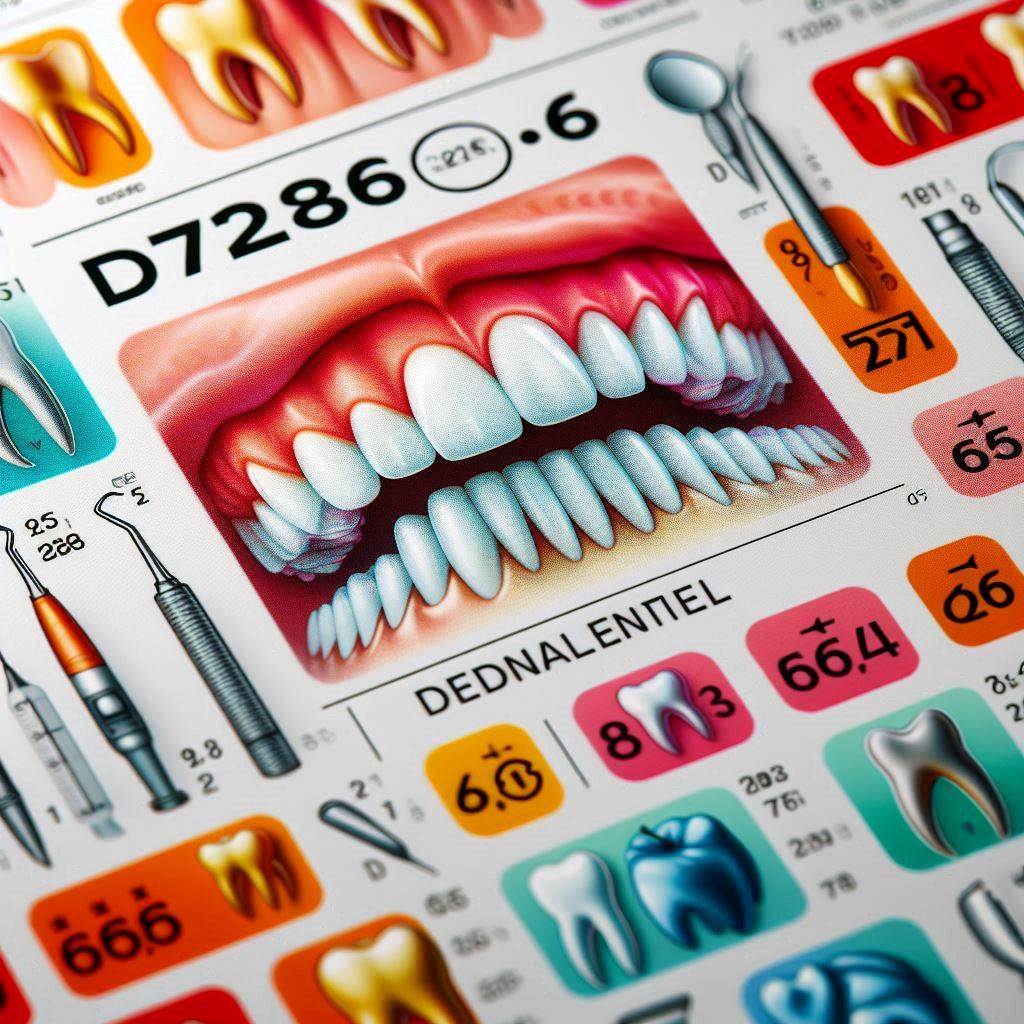D7286 Dental Code
Dental procedures are categorized under specific codes to ensure accurate billing, treatment documentation, and insurance claims. One such code, D7286, refers to the surgical access of an unerupted tooth to aid in its eruption or to facilitate orthodontic treatment. This procedure is often necessary when a tooth fails to emerge naturally due to obstructions, misalignment, or other developmental issues.
This comprehensive guide will explore the D7286 dental code in detail, covering its purpose, procedure, differences from similar codes, recovery process, and billing considerations. Whether you’re a dental professional, a patient, or an insurance provider, this article will provide valuable insights into this specialized surgical intervention.

2. What is the D7286 Dental Code?
The D7286 code is classified under the American Dental Association (ADA) Current Dental Terminology (CDT) as:
“Surgical access of an unerupted tooth.”
This means the procedure involves surgically exposing a tooth that has not erupted through the gum line, often to attach an orthodontic bracket or to remove obstructions preventing natural eruption.
Key Features of D7286:
- Performed under local anesthesia (sometimes sedation).
- Involves a small incision in the gum tissue to expose the tooth.
- Commonly used for impacted canines, premolars, or supernumerary teeth.
- Often followed by orthodontic traction to guide the tooth into proper alignment.
3. When is the D7286 Code Used?
This procedure is typically recommended in cases where:
✅ An unerupted tooth is detected via X-ray or clinical examination.
✅ Orthodontic treatment requires tooth exposure for alignment.
✅ The tooth is blocked by bone, gum tissue, or another tooth.
✅ Delayed eruption is causing complications (e.g., cysts, infections).
Common Teeth Requiring D7286:
| Tooth Type | Reason for Surgical Access |
|---|---|
| Maxillary Canines | Often impacted due to lack of space. |
| Mandibular Premolars | May be blocked by adjacent teeth. |
| Supernumerary Teeth | Extra teeth preventing eruption. |
4. Difference Between D7286 and Other Surgical Codes
Several dental codes involve tooth exposure or extraction, but D7286 is unique because it focuses solely on surgical access rather than extraction.
| Code | Description | Key Difference |
|---|---|---|
| D7286 | Surgical access of an unerupted tooth | Only exposes the tooth (no extraction). |
| D7210 | Surgical extraction of an erupted tooth | Removes an already erupted tooth. |
| D7240 | Surgical removal of an impacted tooth | Extracts an impacted tooth entirely. |
5. Step-by-Step Procedure for D7286
Step 1: Diagnosis & Imaging
- Panoramic X-ray or CBCT scan to locate the unerupted tooth.
- Evaluation of gum and bone structure.
Step 2: Anesthesia Administration
- Local anesthesia (sometimes IV sedation for anxious patients).
Step 3: Incision & Tissue Reflection
- A small gingival flap is created to expose the underlying tooth.
Step 4: Bone Removal (If Necessary)
- If the tooth is covered by bone, a small osteotomy may be performed.
Step 5: Attachment of Orthodontic Bracket (If Needed)
- A gold chain or bracket may be bonded to the tooth for orthodontic traction.
Step 6: Suturing & Healing
- The gum is repositioned and sutured (sometimes left open for eruption).
6. Common Reasons for Performing D7286
- Impacted Canines (Most common in orthodontic cases).
- Delayed Eruption Due to Overcrowding.
- Supernumerary Teeth Blocking Eruption.
- Preventing Cyst Formation Around Impacted Teeth.
7. Preoperative Considerations
- Medical history review (bleeding disorders, allergies).
- Antibiotics may be prescribed if infection is present.
- Smoking cessation advised for better healing.
8. Postoperative Care and Recovery
- Pain Management: NSAIDs (e.g., ibuprofen).
- Oral Hygiene: Saltwater rinses, avoiding brushing near the site.
- Diet: Soft foods for 3-5 days.
- Follow-Up: Removal of sutures after 7-10 days.
9. Potential Risks and Complications
- Infection (rare, if proper hygiene is maintained).
- Swelling & Bruising (common, subsides in 3-5 days).
- Nerve Injury (very rare, depends on tooth location).
10. Insurance and Billing for D7286
- Coverage varies—some insurers classify it as surgical vs. orthodontic.
- Pre-authorization may be required.
- Average Cost: 300−300−800 (depending on complexity).
11. FAQs
Q1: Is D7286 a major surgery?
No, it’s a minor surgical procedure performed under local anesthesia.
Q2: How long does recovery take?
Most patients recover fully within 1-2 weeks.
Q3: Will the tooth erupt naturally after D7286?
Often, orthodontic traction is needed to guide eruption.
Q4: Can D7286 be done on children?
Yes, it’s common in teens with impacted canines.
12. Conclusion
The D7286 dental code is essential for managing unerupted teeth, particularly in orthodontic cases. This procedure involves surgical exposure to facilitate eruption or bracket placement. Understanding its indications, differences from other codes, and recovery process helps patients and providers make informed decisions.


